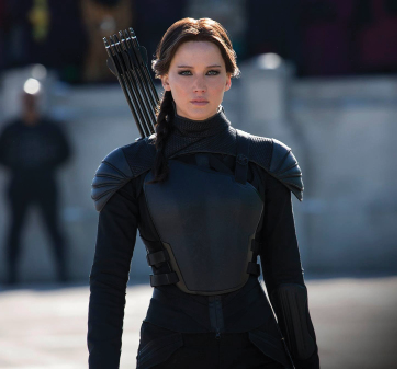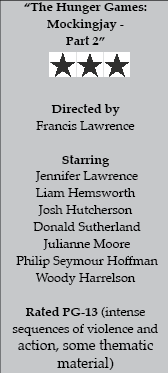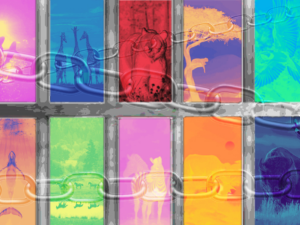Mockingjay soars on screen

By Facebook user The Hunger Games
December 2, 2015
After leaving viewers an exceptional cliff-hanger in “The Hunger Games: Mockingjay – Part 1,” the partner film and finalé to the popular “Hunger Games” series had much to live up to. With an emotionally-taxing novel to mimic and astounding scenes to recreate, “The Hunger Games: Mockingjay – Part 2” delivered.
“Mockingjay: Part 2” wraps up the journey of protagonist Katniss Everdeen’s life from mundane to murderous. In this film, we find Katniss, along with her Hunger Games partner, friend, and potential love, Peeta, and many allies from their home, District 12, and the underground District 13 set to take down the unrelenting President Snow in a fast-paced civil war.

While “Mockingjay: Part 1” strayed from author Suzanne Collins’s narrative to bring more depth to the story on screen, it set up an amazing basis for “Mockingjay: Part 2” to soar. Scenes are created in the former film to develop a sense of where the fictional nation of Panem is in its state of war, which allows the latter to focus on the key themes that make the series the powerful story it is.
In “Mockingjay: Part 1,” the ever-victimized Peeta is brainwashed by Snow to believe that Katniss is corrupt and must be targeted. In “Mockingjay: Part 2,” Peeta’s mental development is chronicled amid the raging war with a main theme of “bringing him back” prominent. “Mockingjay: Part 2” follows Peeta’s recovery from Snow’s control as the raging war between the president’s Capitol and the 13 districts of Panem ensues.
Throughout the book series, Collins often depicted Peeta as the “damsel in distress,” allowing a switch in gender roles to give Katniss the hero persona. This element is no different in this film: Peeta’s increasingly sound behavior throughout the film gives Katniss more and more ability to achieve her goals. The intimate relationship between Katniss and Peeta is so central to the series, and “Mockingjay: Part 2” did it justice by showing how Peeta’s vulnerability is linked to Katniss’s strength.
Keeping Katniss’s relationship with Peeta in mind, this film especially succeeded in downplaying the love triangle between Peeta, Katniss, and her longtime friend Gale. “The Hunger Games” is not about who gets the girl in the end, but rather it is a political and complicated storyline that goes beyond teenage angst. “Mockingjay: Part 2” recognized that and made the few scenes in which the romance is acknowledged unmemorable.
“Mockingjay: Part 2” does not sugarcoat the violence in Panem or dodge the characters’ mortality. Rather than overplaying the brutality, the film is a carefully-constructed reminder to the audience that not all stories are meant to have happy endings.
The number of deaths in “Mockingjay: Part 2” is astronomical, and violence makes up a large part of the storyline. The challenge was to create a film that did not stray from Collins’s narrative but also did not lessen the load.
As a result, “Mockingjay: Part 2” dealt death in small doses with little time to grieve. Many deaths occur in times of great drama and action, giving remaining characters no time to deal with the loss; whereas in the novel, readers are given Katniss’s thoughts and bear the burden.
Creating a film where characters cannot mourn for longer than a scene gives viewers a dramatic experience without the emotional turmoil that would make a film too hard to watch.
Those familiar with the book series and its ending will not be disappointed. The film remains in tune with the harshness that is so fundamental to “The Hunger Games,” bringing the series, heart-crushingly, full circle.
The film brings together every element of the entire series, with nothing left wanted or any ends loosely tied. Themes are linked back to the first film and new effects and ideas are thrown in for good measure. “Mockingjay: Part 2” is ultimately how a finale should be executed.







